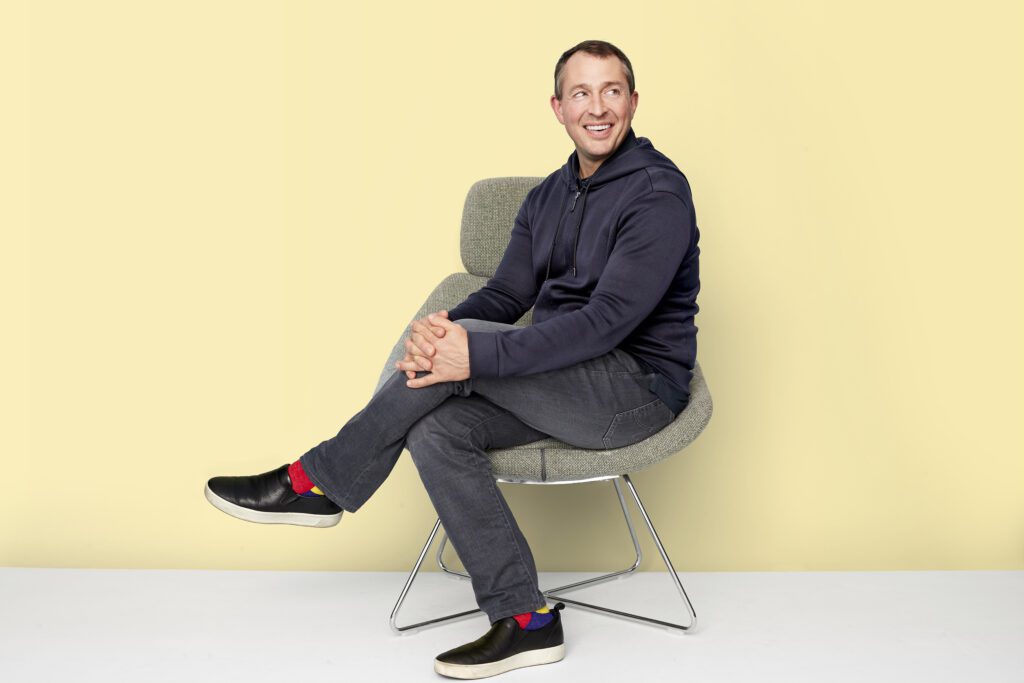Why agile workplace management is key for the future of work
Engineering the future of work will require automation, employee listening, and agile workplace management solutions.
Why You Should Care
ServiceNow on what HR teams and employers need to factor in to return to the workplace.
What technologies will help improve employee engagement and experience?
The HR and employee trends you need to be aware of to succeed in 2021 — and beyond.
As models for the remote-work revolution mature, businesses are pivoting towards the technological infrastructure and cloud to empower their workforce — wherever they want to be.
We spoke with Blake McConnell, Senior Vice President of Employee Workflow Products at ServiceNow, who shared his learnings and advice on forecasting the employee experience of the future, launching innovative new technology solutions every two weeks, and leading a team at the forefront of the COVID-19 fight.
In Part One of our interview McConnell revealed the journey he’s been on over the past 12 months.
Now for Part Two, McConnell explains how he took that learning and experience to the next level to drive new workflows, customers, and develop new future-focused innovation at speed.
Adapting to the unfolding situation as a result of the pandemic meant McConnell and his team had to be agile.
“We needed to break a tonne of stuff, learn what we broke, and learn why it broke, and then how to fix it,” he tells UNLEASH.
Doing things at speed didn’t prove particularly challenging for the dev team as they’re used to building apps on the platform and have a deep understanding of what works best.
The real challenge was on the product side. “What are we actually going to build and when? That gets compressed. It’s not just what organizations need but why they need them,” McConnell says.
“The bigger problem is once we’re shipping — are customers used to consuming at this velocity? We have a traditional enterprise sales force who are now getting enabled on releases every two weeks. How do we get global enablement for the sales team?”

With this in mind, McConnell went on to explain how ServiceNow’s sales team is structured between technical and non-technical salespeople.
The business had to quickly figure out how they were enabling those teams and how to get their materials ready in time.
“The downstream implications for getting the company ready are bigger for a company our size,’ McConnell explains. “That’s where it became strained when moving at that velocity.”
ServiceNow quickly realized that getting products to market under normal circumstances would normally require 50 different steps — but this wasn’t an option in the midst of the pandemic.
“We can’t do 50,” McConnell notes, adding that it was then a matter of prioritizing and figuring out what the key five steps would be.
“Then you snap the chalk and move on. There’s a lot to be said for that,” he adds.
The I.T. crowd
The new workflow enabled McConnell’s team and ServiceNow to flex their muscles and enter entirely new markets.
“This is fascinating,” McConnell says. “There are two ways we did this. We met with new people who we’d never met with before.
“Pre-pandemic we were predominantly talking to I.T. and HR. And on a good day, we would find that I.T. got along with HR — if they get along then they are going to love us. If they are butting heads, then that’s not really that good for anyone because we feel like we’re running a therapy session.”
The need for HR to become embedded into every department is one of the biggest lessons to have come out of the pandemic. HR needs to be people-centric, purpose-driven, and add value to the entire employee journey.
This need for collaboration and synergy isn’t new, but it has become increasingly important.
“For years, we’ve been giving industry keynotes about the need to get various corporate services to get along and to realize all the great work they could do if they were operating on a common platform.
“So suddenly we’re having all these discussions we never dreamed we could have at a higher level because employees are now a corporate priority,” he adds.

But what does this mean for customers?
“On the customer side, it’s allowed us to get pushy,” McConnell notes.
If McConnell is speaking with a customer desperate to get employees back into the workplace, he is now empowered to say ‘Look, we need to have an honest coversation about what you need so we can get your requirements built into our future releases.’
“We have capacity on the roadmap to integrate with a wearable tech vendor, with a Bluetooth vendor. We can work to fill up our capacity roadmap now and for the next few months,” McConnell adds.
Mission impossible: Workplace return
For the most part, every executive out there is asking themselves how and when the vaccine will be rolled out and what part the employer will play throughout the entire process.
“Nobody really knows right now,” McConnell says. “In the early days the employer does have a role but it’s evolving with and alongside healthcare providers as the vaccination rollout progresses around the world.”
Much of this will depend on how rollouts are organized at state and local level but McConnell believes that employers will have to collect employee vaccine data. He predicts there will be a vaccine status app for each employee and workplaces will be able to collect that information to plan for a safe return to the workplace.
Looking further afield into the second half of 2021, McConnell believes workplace management solutions will need to take into account the employer’s need to establish agile reservation systems, and the ability for organizations to keep tabs on employee entry and exits, facility cleaning, and reporting on available working spaces.
“The second thing I will say is that there will be a hybrid workforce in most places. I don’t think most people will go back to the office five days a week,” he adds.
To overcome this, HR departments need to leverage existing productivity and communications tools. For example, ServiceNow can integrate with Microsoft Teams, Slack, and Facebook.
McConnell believes workplace services want to be more agile: “Across the board and portfolio for us, it’s all about how an employee experiences company life and what platforms they use.”
“What natural language and search would make their lives better? A lot of nerdy conversations are happening there because, at the employee level, it’s all about making them feel comfortable with the tools they have.”
“Lockdown or no lockdown employees want an experience at work which is similar to the experience they have at home. This is easy to say and hard to do. Searching the internet via Google is different from searching the enterprise. We invest a lot in AI-driven search that gives intent and recommendations. We also invest in natural language […] If it’s easy to find at home it should be easy at work.”
Employee health trends
The pandemic has affected individuals in different ways but it’s certainly blurred the lines between personal and professional — and in many cases it’s reinforced the belief that we’re literally living at work.
It’s therefore hardly surprising that employee health and mental wellbeing tops the HR agenda — and it should continue to do so throughout the rest of 2021 and beyond.
“I focus on sentiment – employees are getting work done but do they feel good about it? Is your employee feedback in the moment good? How do you help employees learn, or return to work from parental leave?” McConnell says.
Interestingly, McConnell notes there’s a growing trend when it comes to companies having a medical office on-site.
This requires a change in mindset and processes. “What is the medical case management companies are running and the flu shots they’re giving on-site? They want to manage that because the new world is all about keeping your employees healthy and safe.”
Automation is key
Much has been said about the potential of AI in the HR space and McConnell agrees that automation will play a key role in the future of work.
New technologies such as AI-powered chatbots are already helping organizations drive trust across the entire workforce. Having access to these innovative technologies is the first step towards innovation but teams must ensure they are deployed in the best way possible.
Employee behavior is changing. McConnell believes employees want immediate responses.
“An employee can ask how many days of holiday they have left and a third-party can come back with an answer. Employees don’t want an FAQ with all their holidays, they want to know about their next holiday. They want specificity and recommendations.”
Technology aside, the return to the workplace is still uncertain but McConnell believes 2021 will provide some clarity.
“As I say it’s more about balancing when people want to go back to the office and when employers want them,” he notes. “But I believe Summer is a good place to anchor and if we’re there faster people will be pleasantly surprised.”
Sign up to the UNLEASH Newsletter
Get the Editor’s picks of the week delivered straight to your inbox!

Head of Special Projects at UNLEASH
Jennifer Dunkerley is an award-winning editor and senior digital content manager.
-
Topics
Automation
Future of Work
